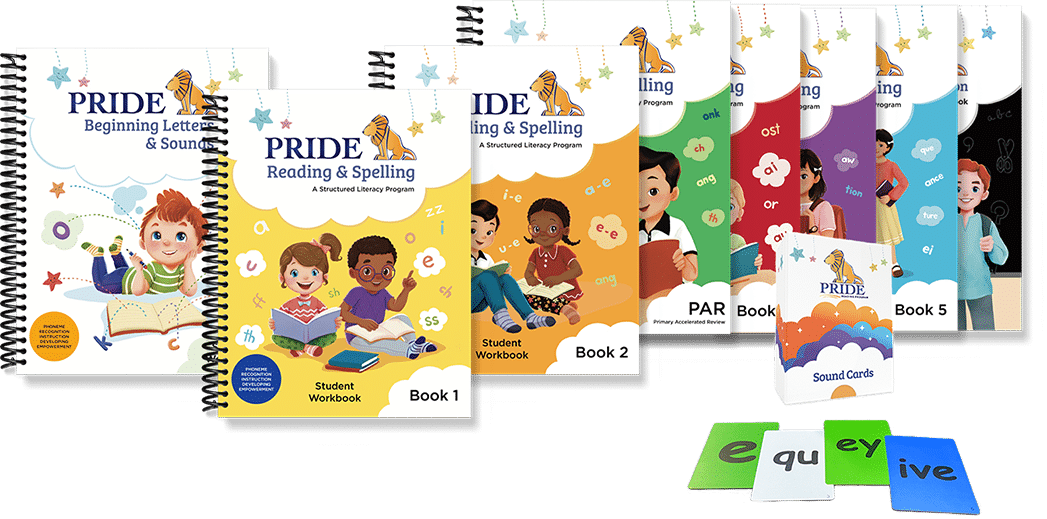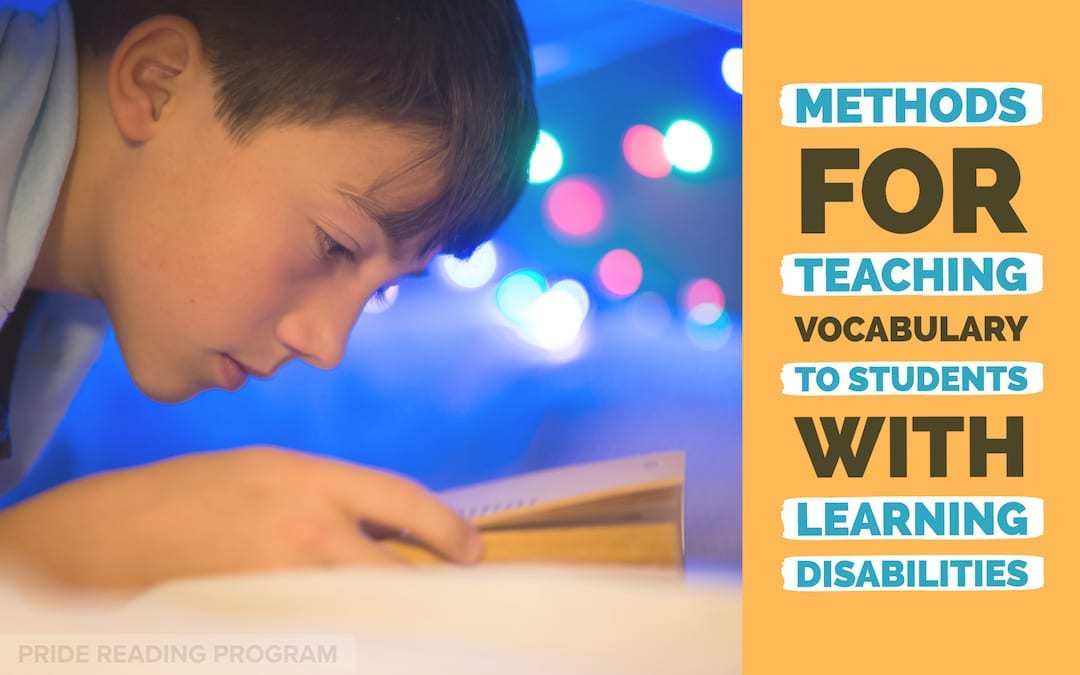Children typically start Kindergarten knowing around 5000 words. During the next three grades they learn at least one thousand more new vocabulary words per year and by Grade 4, they are learning on average from one thousand to three thousand new vocabulary words per year!
According to research, only some words are learned through direct vocabulary instruction in the classrooms or home study programs and all the rest is learned through reading itself! Now you understand why reading a lot is so important in the development of vocabulary. Here is the research – if you want to dig in to it a little deeper.
Reading a lot is the very best way for kids to learn vocabulary, but today I am going to focus on the other part of learning vocabulary. The methods and teaching of it. Although many strategies are effective for students with varying abilities, the following methods always work best for my kids with learning disabilities to help make those vocabulary words really “stick”:
How to Introduce Vocabulary Words During Reading
Reading and learning words that are unknown to your student should not only help your student comprehend the text that is being read but also lead to a greater understanding of the world itself. The strategies for teaching unfamiliar words is as follows:
1. Tell the student the word.
2. Talk about the word, giving as much background as possible – a science or history lesson when appropriate.
3. Demonstrate how the word is used in a sentence.
4. Discuss multiple meanings of the word with the student.
5. Practice visualization. For example – to teach the word ‘avid’ ask the student to visualize a person that they might know who is an avid reader or avid bowler and then trace the word avid while they imagine the person.
6. Together with the student, compose a simple definition and have the student write it on the whiteboard.
Now… Drill those words!
After your student understands the meaning of the vocabulary word it is time to write down that word and practice it. This is where you pull out those index cards and markers.
Have your student write the word on one side and write the definition on the back side. You will want to review the flashcards with your student constantly (I’m talking all year)! It is really encouraging and motivating for your student to see their vocabulary bundle grow bigger and bigger.
Because you won’t want to just drill drill drill, here are some really fun vocabulary activities that you can try out in your vocabulary lessons as well:
How to Practice Vocabulary Words in a fun way!
Draw the Word:
Have your student draw an image of each vocabulary word. Make the images funny and memorable so that they really stick into your student’s mind. You can also use this drawing on their flashcards.
Vocabulary Word of the Day:
This is a really great way to practice vocabulary and use the entire classroom or family in the process. Post one of the flashcards up on the front door. Every time your student walks in and out of the door they have to give you the word in a sentence. Make the whole classroom or the whole family participate in it if you are homeschooling – so much fun! You can also make it Vocabulary Word of the Week – if your student (or anyone else in the family) needs extra practice time.
Play Charades
Make a game out of learning the vocabulary words – like playing charades. Take turns where your student has to act out the word and you have to guess it, and then the other way around.
Write a Story
You can have your student use the vocabulary words into a fun and creative story. This will really help your student spell and practice using the words in sentences.
A Word About Audiobooks…
Listen to audiobooks regularly! Audio books will help expand your student’s listening vocabulary. Later on, when your student runs into the same word in print, they will be better able to decipher the word and its meaning by having already had the exposure to it beforehand.
It always helps a lot if you have your student listen to a novel first, before reading it. It gives them the pronunciation of those difficult to pronounce locations, names and other Proper Nouns that they struggle with when reading.
Your local library will offer free audiobooks with a library card. If your student has been diagnosed with a learning disability you can also look into Learning Ally which is a non profit volunteer organization.
Thank you for reading my post today. You might also enjoy reading my previous posts:
Reading Comprehension: My 5 Step Lesson Plan for Inferencing
How to Find Your Child’s Reading Level
My Favorite Sight Word Activities
While you are here…please check out The PRIDE Reading Program. This is an Orton-Gillingham, reading program for students with learning disabilities. It is perfect for tutors, teachers and parents that homeschool.



